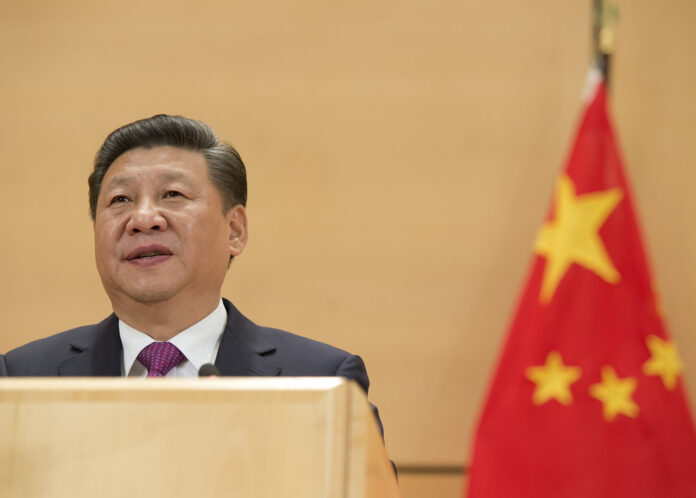China’s Standard Map 2023: On August 28, 2023, China unveiled a new map of its territory, which includes the disputed territories it claims in the South China Sea and Taiwan, as well as along its western frontier with India.
It was during the so-called “National Mapping Awareness Publicity Week” that the People’s Republic of China’s Ministry of Natural Resources posted the “2023 edition” of its standard map on the website of its cartographic service.
Chinese media:
The map was created using “the drawing method of national boundaries of China and various countries around the world,” according to official Chinese media. These claims are not particularly new. On the other hand, the release of this report signals the start of summit season.
Since 1962, when the Sino-Indian War ended, China has controlled the dry northern extension of Ladakh, known as Aksai Chin, and the Indian state of Arunachal Pradesh, which it claims to be the southern part of Tibet.
A “ten-dash line” encompasses ninety percent of the South China Sea and all of Taiwan, and it includes numerous uninhabited islands and islets claimed by Vietnam, the Philippines, Brunei, Malaysia, and Indonesia.
Like China’s other neighbors, Malaysia and India have spoken out against the new Chinese national map. Beijing has been releasing updated versions of China’s national map every few years since at least 2006.
These new editions are meant to correct what Beijing deems “problematic maps” that incorrectly depict China’s territorial borders.
National Map:

On Thursday, Philippine officials said they had “rejected” the map because it included a dashed line through a disputed area in the South China Sea, despite a 2016 international tribunal ruling in favor of Manila.
A statement from the Philippines’ Foreign Affairs Department says that China’s “supposed sovereignty and jurisdiction over Philippine features and maritime zones (has) no basis under international law.”
China’s incorporation of the disputed Aksai-Chin plateau and the Indian state of Arunachal Pradesh prompted India to lodge a “strong protest” on Tuesday.
India’s foreign secretary, Arindam Bagchi, claimed that the country had “lodged a strong protest through diplomatic channels with the China side” regarding China’s “so-called 2023 standard map,” which includes territory that is legally part of India.
These assertions are baseless, hence we disagree with them.

China’s “unilateral claims” have also been denied by the Malaysian Ministry of Foreign Affairs, which stated that the nation in Southeast Asia “is consistent in its position of rejecting any foreign party’s claims to sovereignty, sovereign rights, and jurisdiction on Malaysia’s maritime features.”
Foreign Minister:
China’s Foreign Ministry spokeswoman Wang Wenbin described the modifications as a “routine exercise of sovereignty in accordance with the law” and denied the allegations on Wednesday at a regular press session.
He expressed his wish that all parties involved would remain composed and refrain from drawing premature judgments.
China shares borders with fewer countries than it does with those with which it has territorial conflicts.
The Chinese Communist Party (CCP) has made deceptive and manipulative attempts to impose territorial control over other sovereign territories while led by Xi Jinping.
Beijing has broken all international regulations in its desire to become the dominant landowner. Arunachal Pradesh, a state in northeastern India, has seen China demand sovereignty over parts of it, claiming the area as historical Tibetan territory.
Beijing desperately “renamed” up to eleven Indian places in April of this year, altering the names of mountains, rivers, and even neighborhoods. Beijing has previously employed comparable tactics.
The renaming of Indian sites between 2017 and 2021 by China’s Civil Affairs Ministry set off another political dispute. At the time, New Delhi issued a warning on China’s plans to expand.
China Geopolitical
Over the past year, China has been using its geopolitical influence in the twenty-first century, while the rest of the world has been coping with the COVID-19 pandemic.
It has therefore lost favor with several other countries. China, which has previously fought wars with India along its shared border, has imposed economic penalties on Australia.
Furthermore, China has effectively taken over regions of the South China Sea, where its territorial claims coincide with those of other Southeast Asian countries.
Chinese ambassadors abroad have been speaking in a more formal manner in recent years, both in person and on Twitter (which is restricted in China).
To mock the patriotic Chinese action movies that served as its inspiration, a company created the term “wolf warrior diplomacy”.
In summary, major nations like the United States, Australia, Japan, and the United Kingdom, along with international organizations, must work together to stop China’s hostile actions as soon as feasible.





